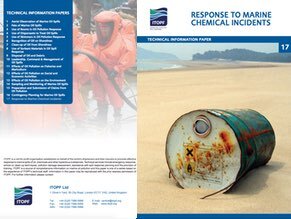Hazardous and Noxious Substances (HNS)
Chemical spills occur at a much lower frequency than spills of oil. However, the consequence of a chemical spill can be more wide reaching than that of oil and there is growing international awareness of the need for safe and effective contingency arrangements for chemical spills.
The wide variety of chemicals transported, their varying physical and chemical properties, the different ways in which they behave in the environment and the potential for effects on human health mean that response to chemical spills is not as straightforward as for oil.
What is HNS?
Not all chemicals transported by sea are considered hazardous. The 2000 OPRC-HNS Protocol, designed for preparedness and response, defines HNS as a substance other than oil which if introduced into the marine environment is likely to create hazards to human health, to harm living resources and marine life, to damage amenities or to interfere with other legitimate uses of the sea.
However, the 2010 HNS Convention, designed for compensation, describes HNS as a substance identified in one or more lists in the International Maritime Organization's Conventions and Codes.
Examples of IMO Conventions and Codes Providing HNS Lists
| Material | Conventions & Codes |
| Bulk liquids | Chapter 17 of International Code for the Construction and Equipment of Ships Carrying Dangerous Chemicals in Bulk (IBC Code) |
| Gases | Chapter 19 of International Code for the Construction and Equipment of Ships Carrying Liquefied Gases in Bulk (IGC Code) |
| Solids in bulk | Appendix 9 of Code of Safe Practice for Solid Bulk Cargoes (BC Code) if also covered by IMDG Code in packaged form |
| Packaged goods | International Maritime Dangerous Goods Code (IMDG Code) |
A general guide is that if the chemical concerned has i) a low biodegradation rate or high persistence, ii) a high bioaccumulation rate or iii) is classed as toxic / flammable / explosive / corrosive or reactive, it is likely to be considered as HNS (radioactive and infectious substances are outside the scope of the HNS regime).
According to IMO regulations, any packaged cargo transported at sea which poses a threat to people, other living organisms, property or the environment should be listed on the manifest as “Dangerous Goods” and should display the appropriate hazard labels, for example as per the UN Globally Harmonised System (GHS) or the International Maritime Dangerous Goods (IMDG) code. Any packaged cargo that represent a threat to the marine environment should also display an “Aquatic Hazard” label.

Explore Documents on Hazardous & Noxious Substances
17 对海洋化学品污染事故的应对措施
本文介绍了在应对化学品泄漏中涉及的问题,并讨论了危害范围、化学品在海上泄漏 时的行为,另外还简要介绍了可以采取的备选应对措施方案。
Categories: HNS, Technical Information Paper (TIPS)

